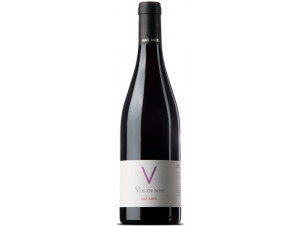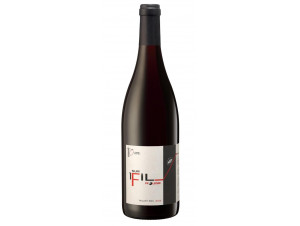You have no items in your shopping cart.
Wine Maury
-
Top Selling
-
Top Selling
-
Top Selling
The Maury AOC takes its name from the origin of its soils
The commune of Maury takes its name from the origin of its soils: the "black earth", whose etymology "Amarioles"; became Maury. Originally, this AOC took into account exclusively the production of V.D.N, or Vins Doux Naturels, since 6 August 1936. These are divided into 10 categories, of 5 different colours, bearing the following denominations:
The white V.D.N.: Maury blanc, Maury ambré, Maury ambré hors d'âge. The rancios: Maury amber rancio and Maury amber rancio out of age. Natural sweet red wines: Maury grenat. Tuilés: Maury tuilé and Maury tuilé hors d'âge. The "tuilé rancio" type wines: Maury tuilé rancio out of age and Maury tuilé rancio.
Since 2011, the appellation d'origine contrôlée has offered a new type of wine: the dry red wines. Previously, the production of these wines was intended for the AOC "Côtes du Roussillon-Villages".
The former vineyard of Amauriols becomes the AOC Maury
Maury V.D.Ns existed long before the traditional method of "mutage", used to make natural sweet wines since the 13th century. It was at this time that the current technique for making these wines was discovered. In 1285, Arnau de Vilanova, a physician at the Court of the Kings of Majorca, put an end to centuries of making wines by "passerillage".
Mr Vilanova discovered that the marriage of a grape liquor with its brandy, allowed for the phenomenon of "mutation". This new method ensures that thenormal fermentation of the wine, necessary to make natural sweet wines, is stopped.
The Maury vineyard proves the antiquity of its viticultural activity, thanks to the numerous vestiges found over the years and dating from before the Roman occupation. Flint axes, spear points and Visigothic tombs have all remained intact. These historical objects were found in the rubble of the farmsteads once occupied by the Templars and the Order of the Knights of St George.
The commune of Maury is located 30 kilometres north of Perpignan, in the department of Aude. It is surrounded by the communes of Tautavel, Rasiguères and Saint-Paul-de-Fenouillet, where the vineyard extends. Despite the fact that it is located in a total of 4 communes, the AOC Maury vineyard is rather small, in a very long cultivation area. The vineyard plots of Maury wines are 17 km long and only 3 km wide.
This long rectangular vineyard is dominated by the majestic fortress of Queribus, and surrounded by huge limestone cliffs. The vines are grown at an altitude of between 140 metres and 350 metres.
Characteristics of the Maury vineyard
In this region of south-eastern France, the climate is typically Mediterranean. In Maury, the so-called "transitional" climate, offers a mixture of Eastern and Mediterranean influences; with Western influences.
The vineyard therefore benefits from a rather balanced climate, both hot and dry, but also cool and humid. The terroir of Maury wines has been known since the dawn of time, for the unique qualities of its soils. They are mostly made up of "black earth", hence the old name of the commune "Amauriols". These soils, composed of schist and schistose marl, give the wines of Maury incredible taste characteristics. The various grape varieties used in the assembly of the wines of the AOC, are selected according to the wine to be produced; the main one remaining the Grenache. This one alone has 80% of the grape varieties of the vineyard.
Natural sweet wines are made from Black, grey or white Grenache. In addition, Macabeu (15% maximum), or Muscat (20% maximum) is also added.
As for dry red wines, they are mainly made from Black Grenache, between 60% and 80%; to which is added Black Carignan, Syrah or Mourvèdre.
The V.D.N. wines offer a low yield, of about 30 hectolitres per hectare. The dry red "still" wines offer a more consistent production, with a basic yield of about 40 hl/ha.
In total, the Maury AOC produces around 7,000 hectolitres of wine per year, for a total cultivation area of 1,150 hectares.
Tasting of the natural sweet wines and dry red wine of Maury
There are many AOC V.D.N.'s with varying characteristics. They are wines that evolve with age, offering an exceptionally rich and complex aromatic bouquet.
Sweet red wines are adorned with a garnet colour, becoming mahogany, or tiled with age. They are charpent, heady and powerful; with aromas of cocoa, coffee and undergrowth. To this are added colourful scents of cooked black and red fruits. They are dense and concentrated on the palate and let you enjoy a wide and tasty aromatic palette.
The white Maury vins doux naturels are amazing! Their colour is splendid, tinged with gold and golden highlights. They offer delicious aromas of candied citrus and white-fleshed fruits. These sweet white wines are particularly well balanced between sugar, alcohol and acidity. They therefore allow you to enjoy an original and pleasantly structured palate.
What to eat with a Maury
.The ideal temperature for drinking sweet wines is between 12°C and 18°C; while dry red wines are best enjoyed at an average temperature of 15°C to 18°C. The V.D.N. are excellent as an aperitif with foie gras or melon, but also with desserts, or cheeses such as Roquefort, Bleue d'Auvergne, or Fourme d'Ambert. Dry red wines are best served with grilled red meats, game and cheese.
Blanquette méthode ancestrale
Coteaux-du-Languedoc Cabrières
Coteaux-du-Languedoc Grès-de-Montpellier
Coteaux-du-Languedoc La Méjanelle
Coteaux-du-Languedoc Montpeyroux
Coteaux-du-Languedoc Pézenas
Coteaux-du-Languedoc Saint-Drézéry
Coteaux-du-Languedoc Terres de Sommières
Côtes-du-Roussillon Les Aspres
Côtes-du-Roussillon-Villages Caramany
Côtes-du-Roussillon-Villages Latour-de-France
Côtes-du-Roussillon-Villages Lesquerde
Languedoc Grés de Montpellier
Muscat-de-Saint-Jean-de-Minervois
Pays d'Oc Gewurztraminer
Saint-Chinian Berlou
Saint-Chinian Roquebrun
Vin de Pays Cathare
Vin de Pays de Cassan
Vin de Pays de Caux
Vin de Pays de Cucugnan
Vin de Pays de la Cité de Carcassonne
Vin de Pays de la Côte Vermeille
Vin de Pays de la Haute Vallée de l'Aude
Vin de Pays de la Vallée du Paradis
Vin de Pays de la Vaunage
Vin de Pays de la Vicomté d'Aumelas
Vin de Pays de Saint-Guilhem le Désert
Vin de Pays des Collines de la Moure
Vin de Pays des Coteaux d'Ensérune
Vin de Pays des Coteaux de Miramont
Vin de Pays des Coteaux de Murviel
Vin de Pays des Coteaux de Peyriac
Vin de Pays des Coteaux du Pont du Gard
Vin de Pays des Coteaux du Salagou
Vin de Pays des Coteaux Flaviens
Vin de Pays des Côtes Catalanes
Vin de Pays des Côtes de Prouilhe
Vin de Pays des Côtes de Thau
Vin de Pays des Côtes de Thongue
Vin de Pays des Côtes du Brian
Vin de Pays des Hauts de Badens
Vin de Pays des Pyrénées-Orientales
Vin de Pays des Sables du Golfe du Lion
Vin de Pays du Mont Baudile
Vin de Pays du Torgan
Vin de Pays du Val de Montferrand






































 TWIL - Achat de Vin
TWIL - Achat de Vin


